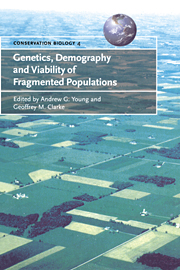Foreword by Peter F. Brussard
Published online by Cambridge University Press: 29 January 2010
Summary
When I was a graduate teaching assistant in vertebrate biology 35 years ago, I could take my students to a location a few miles out of town and show them eight of the nine species of lizards that are found in western Nevada. Now gone as natural habitat, the location is now a subdivision bordered by a strip mall. These same lizard species are also very scarce for several miles beyond the subdivisions. There they have been eliminated by the house cats kept by the owners of 20-acre ranchettes. Farther out into the desert it is very hard to find a lizard within a mile or more of a road; commercial collectors have captured most of them and sold them to pet dealers in the eastern United States. Now I show my students specimens of dead lizards, kept in my laboratory in dusty, alcohol-filled jars.
Similar scenarios are played out relentlessly all over the world as the human enterprise expands and natural habitats disappear. None of the lizards of western Nevada is as yet threatened with extinction, but others in adjacent states are. Of the 10–20 million species of plants, animals, and microbes estimated to be extant, perhaps half will become extinct in the next millennium. Most of these will disappear anonymously – unknown and undescribed by science. Others, with proper scientific names, will vanish quietly, their epitaphs simply stating, ‘last collected in 1999.’
- Type
- Chapter
- Information
- Genetics, Demography and Viability of Fragmented Populations , pp. xv - xviPublisher: Cambridge University PressPrint publication year: 2000

